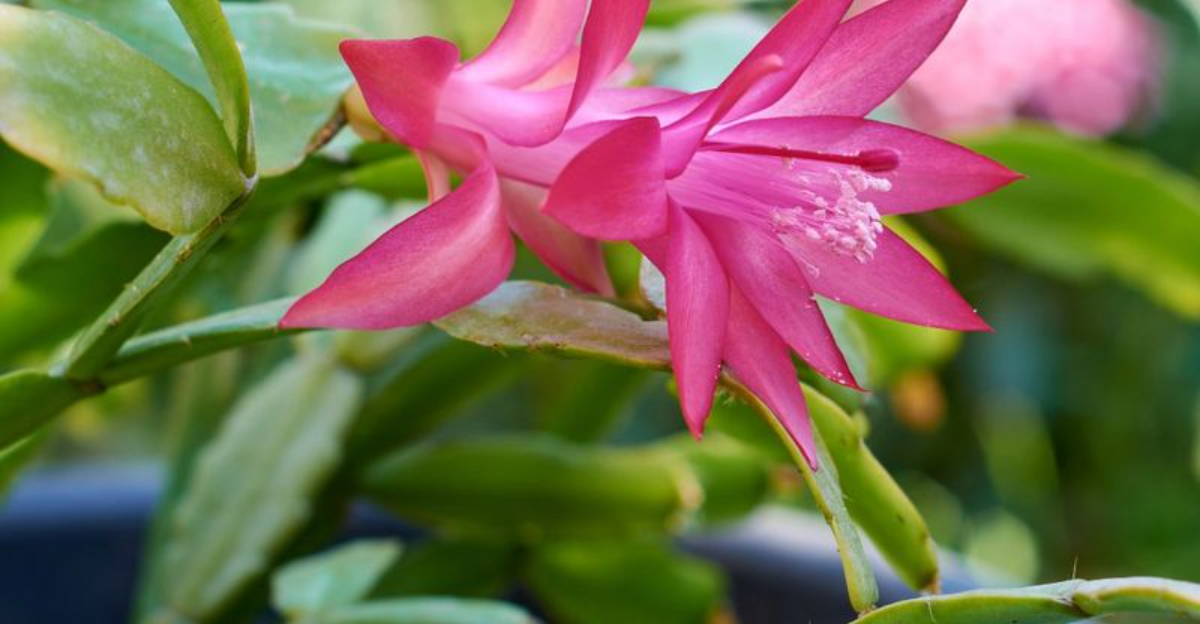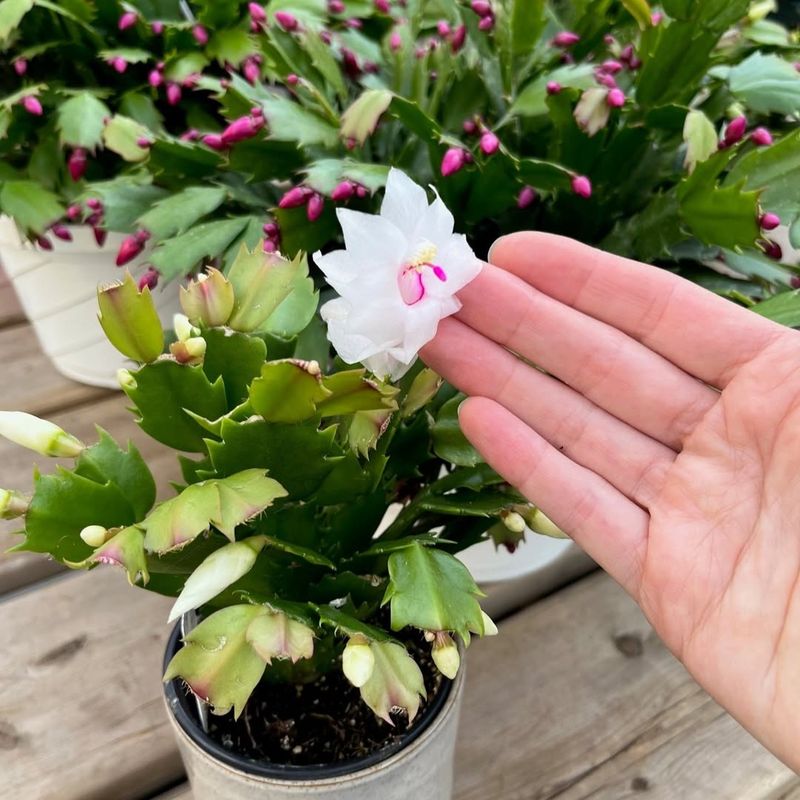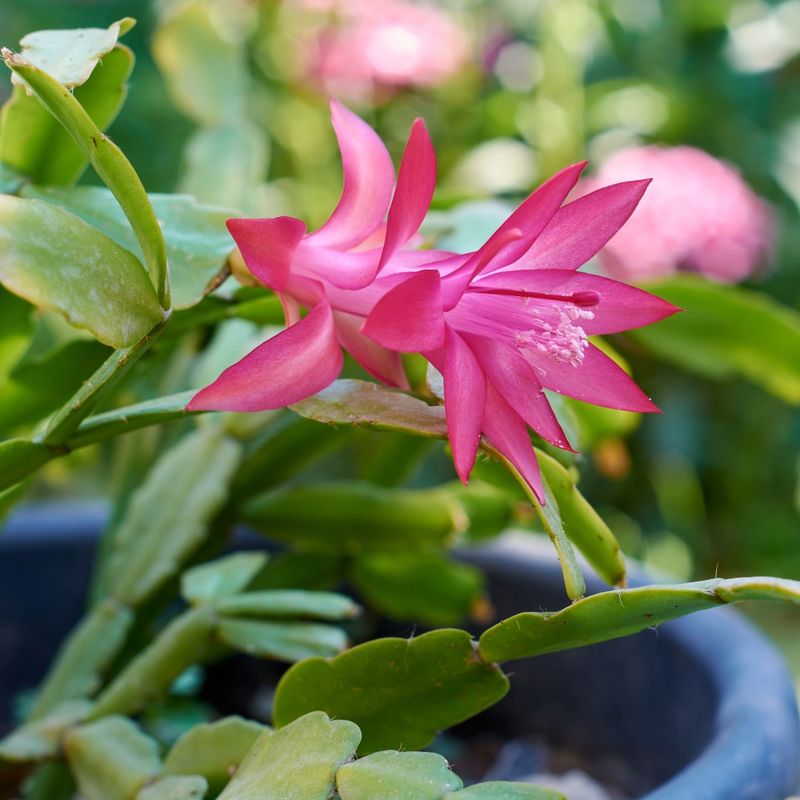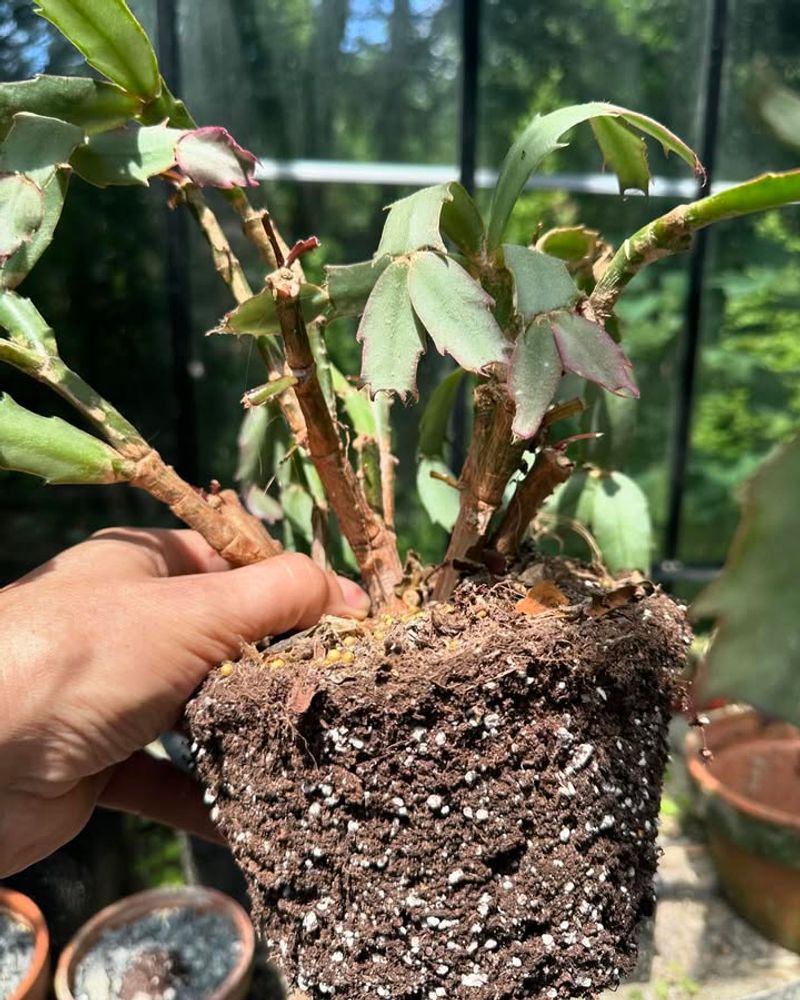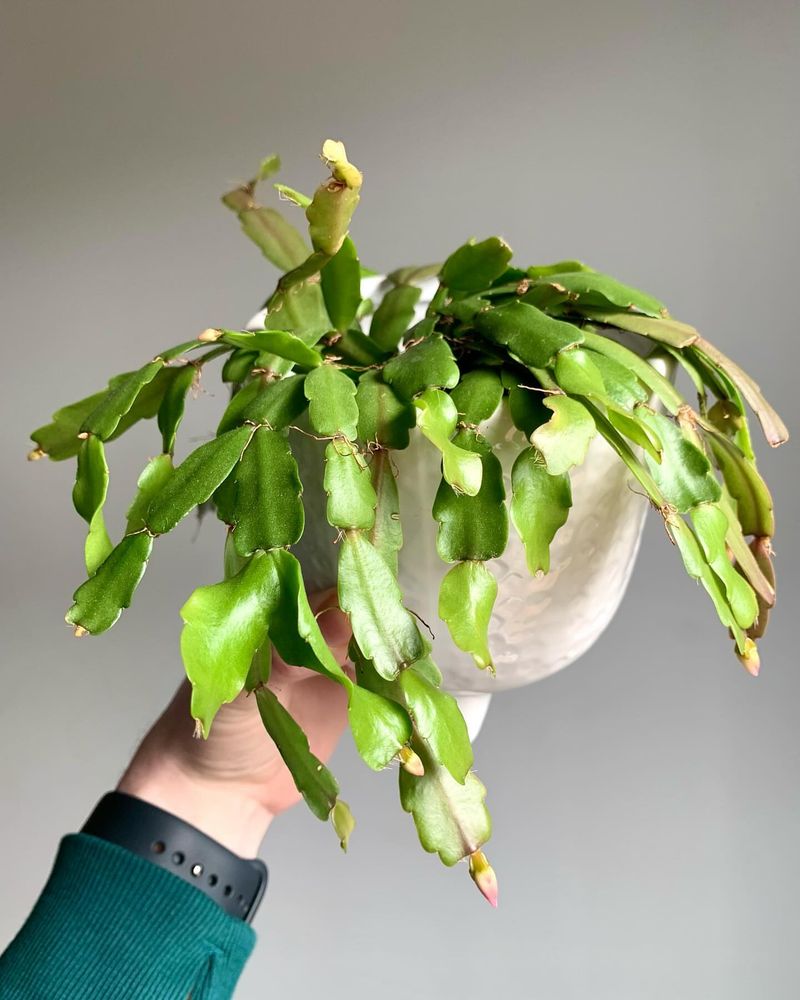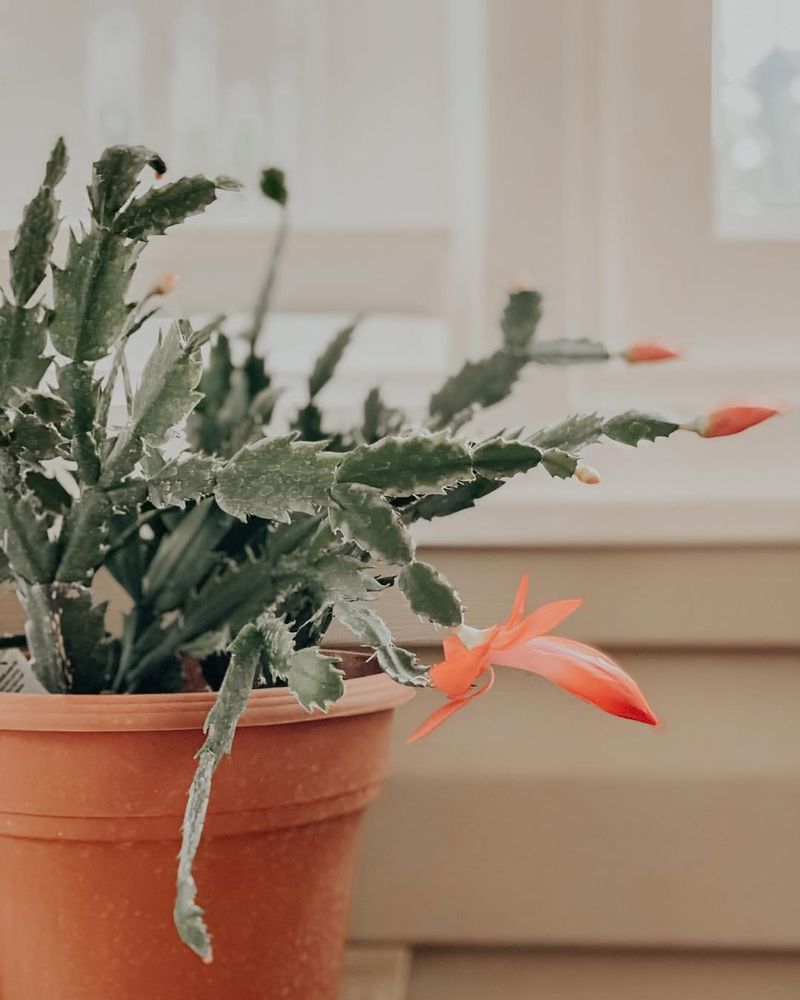California shoppers may chase sunshine year-round, but every December a familiar stumble crops up around the Christmas cactus.
This festive favorite—flaunting blooms that can stop traffic—often finds itself caught in a tug-of-war between good intentions and classic slip-ups. Amid twinkling lights and holiday hustle, many buyers treat this desert diva like just another poinsettia, only to discover it plays by its own rulebook.
Missteps pile up faster than gift receipts, turning what should be a showstopping seasonal display into a plant with a serious case of the holiday blues.
Buying Plants Already Dropping Buds
Many shoppers grab the first Christmas cactus they see without checking for warning signs. Buds falling off indicate stress from temperature changes, improper watering, or rough handling during transport.
Look closely at the plant before purchasing. Healthy specimens have firm, attached buds and vibrant segments.
Avoid any with yellowing leaves or buds littering the soil surface, as recovery takes months and blooms won’t return until next year.
Ignoring California’s Microclimates When Shopping
California’s diverse weather patterns confuse many holiday shoppers. A plant perfect for foggy San Francisco might struggle in sunny San Diego’s heat.
Coastal regions stay cooler and more humid, while inland valleys experience temperature swings. Ask nursery staff about your specific area before buying. Christmas cacti prefer temperatures between 60-70 degrees Fahrenheit.
Consider where you’ll place the plant at home, matching its needs to your local climate zone for better success.
Overwatering Right After Purchase
Excitement about a new plant often leads to drowning it with kindness. Christmas cacti are succulents that store water in their leaves, making them drought-tolerant.
After bringing your plant home, wait until the top inch of soil feels dry before watering. Root rot develops quickly in soggy conditions, turning segments mushy and yellow.
Water thoroughly but infrequently, allowing excess to drain completely. California’s dry December air might trick you into overwatering unnecessarily.
Placing Plants In Direct Afternoon Sun
California’s intense winter sunshine surprises newcomers and longtime residents alike. Christmas cacti evolved in Brazilian rainforests under tree canopies, not blazing rays.
Direct afternoon sun through west-facing windows burns leaves, causing reddish discoloration and crispy edges. Position your plant near bright, indirect light instead. East-facing windows work wonderfully, providing gentle morning sun.
If you only have south or west exposures, use sheer curtains to filter harsh rays during peak hours.
Forgetting About Holiday Heating Systems
December evenings get chilly across California, prompting families to crank up heaters. Forced air systems create desert-like conditions that stress tropical plants.
Heating vents blow hot, dry air that quickly dehydrates Christmas cacti, causing buds to drop and segments to shrivel. Keep your plant away from registers, fireplaces, and space heaters. Grouping plants together or placing a water tray nearby increases humidity.
Monitor your home’s temperature, avoiding dramatic fluctuations between day and night.
Repotting During Peak Bloom Season
Shoppers sometimes buy decorative pots and immediately transplant their new Christmas cactus. Moving plants during flowering causes massive stress and bud drop.
Wait until after blooms fade completely before considering repotting, typically late winter or early spring. Christmas cacti actually prefer being slightly rootbound, which encourages better flowering.
If the nursery pot looks terrible, simply place it inside a decorative cache pot instead. Patience preserves your plant’s stunning December display beautifully.

